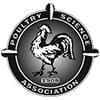Trace Minerals for Broiler Breeders: Organic, Inorganic, or Blend? - Interpretive Summary
Published: September 8, 2023
By: https://poultryscience.org/
by Sam Shafer
As in commercial broiler chicken production, broiler breeder performance depends upon adequate dietary trace minerals, including zinc (Zn), manganese (Mn), and copper (Cu). Broiler breeder diets currently used in the industry contain levels of the inorganic forms of these minerals with generous safety margins. Researchers now report that combining inorganic sources of Zn, Mn, and Cu with organic hydroxy analog of methionine (HMTBa) forms in breeder hen diets may safely reduce trace mineral levels while sustaining high-quality settable egg production.
Many poultry companies currently use a balanced inorganic-organic trace minerals strategy in their diets for broilers, which are fed ad libitum. This approach allows them incorporate lower levels of organic trace minerals -- which are more bioavailable compared to conventional inorganic sulfate or oxide forms -- without affecting performance and in some cases improving it.
However, breeder feeding involves feed restriction programs that control body weight in order to support optimal reproduction. As a result of limit feeding, poultry genetics suppliers advise higher inclusion of trace minerals in breeder diets. Their advice contrasts with National Research Council guidelines, which date from 1994 and provide recommendations for commercial layer hens, but not for broiler breeders.
In this study, researchers from the University of Georgia and Novus International, Inc. used three breeder hen diet trace mineral formulations "of economic interest to a large U.S. integrator," comparing (1) inorganic Zn, Mn, and Cu with (2) comparable HMTBa organics, and (3) a blend of inorganic and HMTBa organic sources. The HMTBa forms provided lower but more bioavailable levels of the trace minerals and represented potential breeder diet cost savings.
The researchers used Cobb 700 slow feathering broiler breeder pullets (n = 1,544) and Cobb Vantage cockerel chicks (n = 188, with an additional 150 reared later for spiking), obtained from a primary breeder hatchery at 1 day of age. They noted that all aspects of rearing were maintained as close to industry standards as possible in a research facility.
The treatment diets were fed to breeder hens during weeks 26-65 of lay:
Control -- inorganic Zn (143 mg/kg body weight), Mn (180 mg/kg), and Cu (123 mg/kg), consistent with current industry practice;
Organic -- reduced levels with only HMTBa Zn (50 mg/kg), Mn (60 mg/kg), and Cu (15 mg/kg); and
Mix -- blend of inorganic/HMTBa Zn (75/25 mg/kg), Mn (90/30 mg/kg), and Cu (22.5/7.5 mg/kg).
The researchers reported that, on average, Organic-fed hens were 1.3% heavier than Control and 1.1% heavier than Mix (P = 0.002). Overall (weeks 25–65), hens fed the Mix diet had higher egg production (P < 0.001) and laid heavier eggs (P = 0.038) compared to hens fed the Control or Organic diets. During the second half of lay, hens fed the Mix diet had better eggshell quality (P ≤ 0.037) and cuticle deposition (P = 0.019).
None of the three dietary treatments affected fertility or hatchability (P ≥ 0.205). Broilers hatched from young Organic-fed hens (29 weeks of age) had higher bone mineral density, as did those hatched from older Organic-fed hens (41 weeks) after a 7-day grow-out (P = 0.047).
The researchers pointed out that other evaluations of trace minerals Zn, Mn, and Cu in breeders are available, "although each one provides different commercial levels, sources, and dietary treatments design." Moreover, they added: "The variety of sources and doses used in these experiments makes it difficult to develop a single recommendation for modern breeders."
They also referred to other research, noting that while the chemistry of HMTBa trace minerals may facilitate their stability and uptake in the poultry gut lumen, studies of trace mineral bioavailability use markers "that may not be crucial in breeders and perhaps is also influenced by breeder age."
What does this study mean for producers?
- Breeding operations may be able to reduce or replace inorganic trace minerals (such as Zn, Mn, and Cu sulfates or oxides) in broiler breeder diets by using organic sources (such as HMTBa trace minerals);
- However, they need to exercise care when replacing the industry's high safety margin levels of inorganic Zn, Mn, and Cu in order to be sure to sustain or improve reproductive performance, hatchability, and offspring quality.
The full paper, titled "Evaluation of industry strategies to supply dietary chelated trace minerals (Zn, Mn, and Cu) and their impact on broiler breeder hen reproductive performance, egg quality, and early offspring performance" can be found in Applied Poultry Research and online here.
DOI: 10.1016/j.japr.2023.100354
Source
https://poultryscience.org/Related topics:
Authors:

Recommend
Comment
Share

Would you like to discuss another topic? Create a new post to engage with experts in the community.



